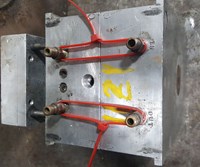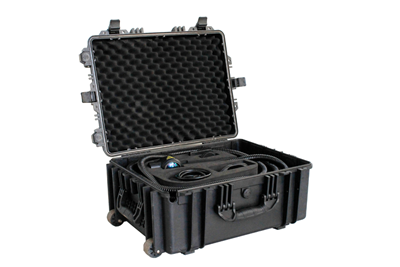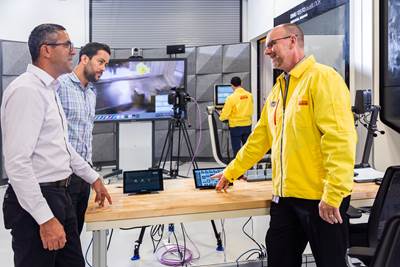Putting Recycled Plastics to Work
Haidlmair discovered that if recycling is done correctly, the difference between virgin and recycled plastic material is minimal.
Despite original equipment manufacturers continuing to increase recycled content in their products for sustainability and molders showing interest in cutting resin costs, recycled plastics are still somewhat misunderstood, and therefore underused. Many fear they are damaged goods, too different to work with and not suitable for injection molding. However, one moldmaker discovered that if recycling is done correctly, the difference between virgin and recycled plastic material is minimal.
Haidlmair is an Austria-based moldmaker with operations in Canada that is widely recognized for its high-quality logistics containers in business-to-business applications. The company was experiencing an increase in customers who were looking for a wider variety of materials to mold their parts, including recycled plastics, which can help optimize part costs. Haidlmair ships more than 200 molds a year from its North American and European shops. If the recycling process and system treated the material gently and maintained its properties, then Haidlmair could take advantage of its logistics container molds as an opportunity to use recycled plastic.
Haidlmair started with its thick-walled, large industrial logistic containers. The material makes up more than 90 percent of the total cost to produce the part. Because the containers are made largely of plastic, and because that plastic makes up most of the production cost, it made sense to substitute the virgin plastic with a less expensive, recycled option. The price of quality, recycled plastic pellets is, on average, 10-15 percent lower than the virgin material. In addition, the process of using recycled plastic uses about four to six times less energy compared with the process of making virgin resin. Consider how much energy is required to convert natural gas to a long-chain plastic molecule. According to a study by the Franklin Associates Ltd., using recycled plastic reduces greenhouse gas emission.
Haidlmair successfully managed the use of 50 percent recycled plastic content for its large-shot weight parts with minimal adjustments. For example, proper material analysis and specification procedures remained the same as those for virgin materials, and the resulting data helped Haidlmair properly conduct flow simulation analysis. The recycling system provider assisted Haidlmair in these efforts.
Haidlmair found that the successful use of recycled materials in injection molding depends on how the original parts are recycled and re-pelletized. The two most important factors for producing a quality pellet of recycled plastic with consistent material properties are:
- Re-melting. Proper re-melting of the recycled material occurs under very low shear rates in the extruder and at the lower end of the melt temperature. The objective is to gently re-melt the original material, which ensures maintenance of the material properties.
- Melt filtration. The proper filtration process will remove any contaminants in the melt like cellulose, metal or wood pieces. State of the art melt filtration is fully automated and does not require manual operation steps. The melt is filtered continuously at low pressure and can remove particles as small as 70 microns in diameter.
Today’s recycling systems can help produce consistent quality plastic pellets that moldmakers can use in a wide variety of injection-molded parts.
Related Content
Impact of Bio-Based and Recycled Resins on Molds
Recycled and biodegradable resins require tooling considerations for varying material properties, temperatures and consistent product quality.
Read MoreHow to Manage Talent to Improve Operational Success
Profitable shops understand that operational and people improvement are inextricably linked. Are you doing what you can to achieve sustainable success?
Read MoreMMT Chats: Sustainable Workforce Growth with the ATR Framework
Join MoldMaking Technology Editorial Director Christina Fuges as she discovers the benefits of eLearning, including promoting sustainability in moldmaking by reducing travel, minimizing waste and enhancing global workforce accessibility.
Read MoreMMT CHATS: Navigating Challenges and Innovations in Large-Scale Mold Manufacturing
MSI Mold Builders shares how to overcome large-scale mold-building challenges, sustainability efforts and future technological advancements.
Read MoreRead Next
Plastic Injection Molding from Pellet to Part
This series of articles examines the injection molding process, through which a plastic pellet is transformed into a plastic part.
Read MoreReasons to Use Fiber Lasers for Mold Cleaning
Fiber lasers offer a simplicity, speed, control and portability, minimizing mold cleaning risks.
Read MoreHow to Use Continuing Education to Remain Competitive in Moldmaking
Continued training helps moldmakers make tooling decisions and properly use the latest cutting tool to efficiently machine high-quality molds.
Read More





















